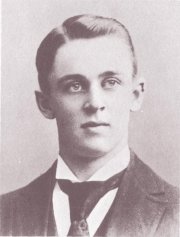While you’re lighting fireworks, grilling burgers, and waving the flag on the 4th of July, don’t ignore the math history lessons. We know — many people think the words “summer” and “math” go together like ice cream on hot dogs. But the fourth of July presents a wonderful opportunity to teach your children about amazing American mathematicians.
Whether it’s a short history lesson (like the one we’re presenting below!) or something as exciting as the math behind the fireworks, summer math activities can help kids remember what they learned during the school year. Download one of our free summer math printables for fun summer math activities. And teach your kids about these math American idols!
4 amazing American mathematicians
John Forbes Nash, Jr.
This American Mathematician is the subject of the controversial Hollywood film, A Beautiful Mind, which was loosely based on his biography. Nash was a paranoid schizophrenic. His outstanding achievements in economics make him one of the most recognized mathematicians of his time. His work in game theory, differential geometry, and partial differential equations changed mathematics forever. In 1994, he shared the Nobel Memorial Prize in Economic Sciences with fellow game theorists Reinhard Selten and John Harsanyi. His most recognized work is the Nash embedding theorem.
Robert A. Millikan

As a scientist, Millikan made many discoveries in electricity, optics, and molecular physics. He is most noted for his work on the oil-drop experiment, which was the first successful scientific attempt to measure the effect of a subatomic particle. During World War 1, Millikan helped developed anti-submarine and meteorological devices. He authored many books on physics and was awarded the Nobel Prize for Physics in 1923.
Donald A. Glaser
Glaser received a B.Sc. degree in physics and mathematics at the Case Institute of Technology in 1946. He completed his first original research in mathematics as a young college student, composing a bachelor’s thesis regarding an electron diffraction study. As a professor at the University of California at Berkeley, Glaser developed ideas that led to the invention of the bubble chamber in 1952. In 1960, Professor Glaser married Miss Ruth Bonnie Thompson; the same year, he was awarded the Nobel Prize.
David Harold Blackwell
Blackwell was the first African American inducted into the National Academy of Scientists and lends his name to the Rao-Blackwell theorem. As a child, Blackwell had little interest in algebra and trigonometry. But in his junior year, he fell in love with mathematics during an elementary analysis course. At age 22, he earned his first Ph.D. in mathematics. Blackwell was also a pioneer in textbook writing. He authored one of the first Bayesian textbooks, Basic Statistics published in 1969.

@DreamBox_Learn










